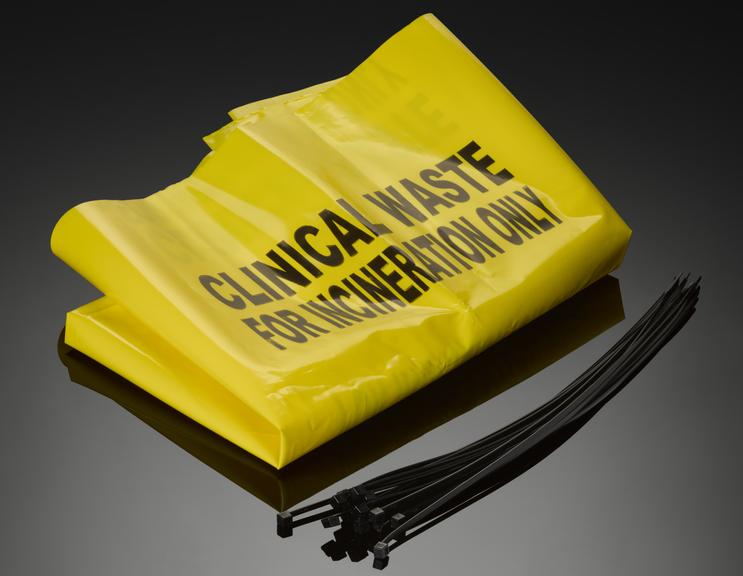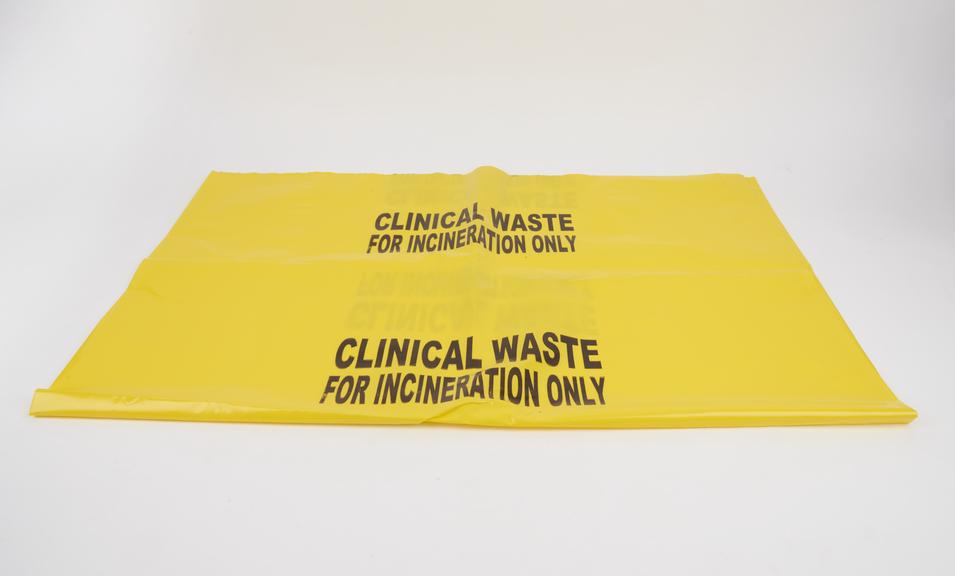
Yellow plastic clinical waste bags
- PART OF:
- Yellow plastic clinical waste bags
- Made:
- circa 2014-15 in unknown place




Yellow plastic clinical waste bag, for use in the restricted 'red zone' areas by frontline health workers during the Ebola outbreak in Sierra Leone, 2014-2015
Safely disposing of clinical waste especially material used to diganose and treat people with Ebola is essential to preventing its spread. The virus is transmitted such as through contact with blood and body fluids of someone with an active infection.
Areas of treatment and diagnosis were restricted to prevent as many people as possible from coming into contact with Ebola. Red zones were where people with symptoms were quickly quarantined.
The West African epidemic of Ebola that began in 2014 was the most widespread outbreak of the virus disease in history—causing major loss of life and disruption to society and the economy, mainly in the countries of Guinea, Liberia, and Sierra Leone. It became international news and prompted an international medical response. In June 2016 when Guinea was the last country to be declared free of Ebola, there were more than 28,000 cases and more than 11,000 deaths. Since 2021, a vaccine has been available to protect high-risk populations and frontline workers.



